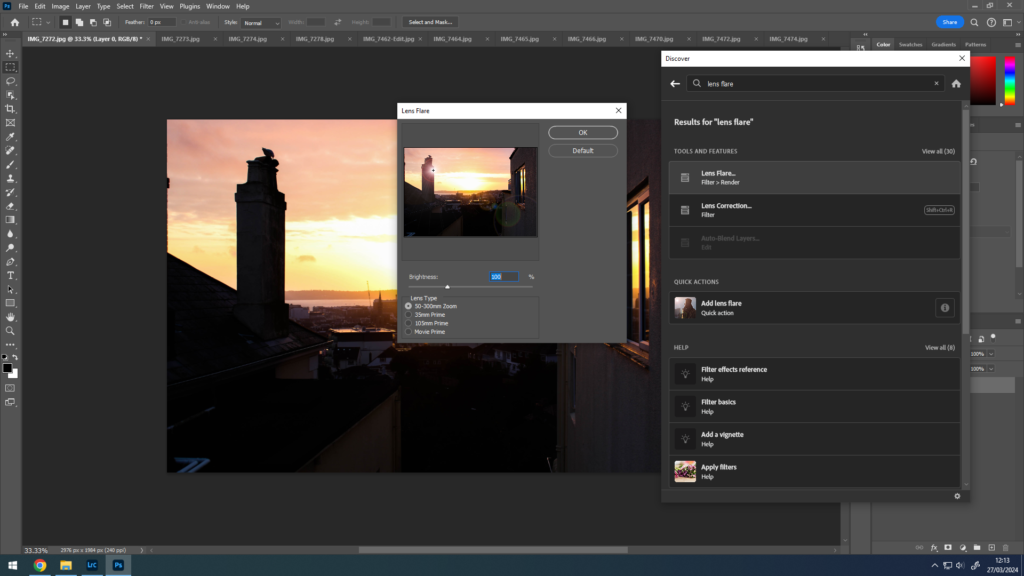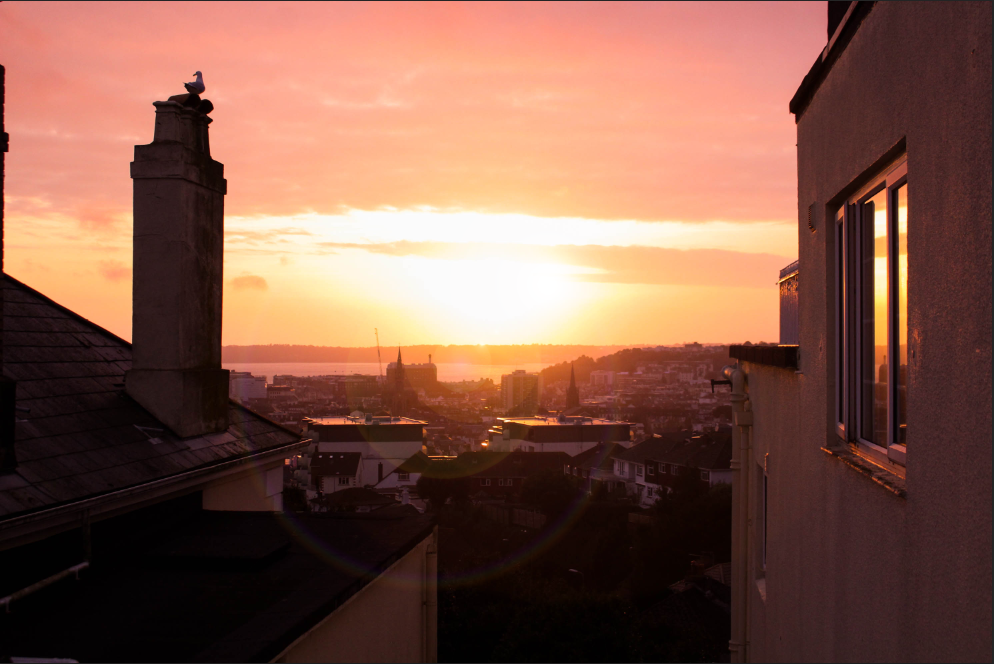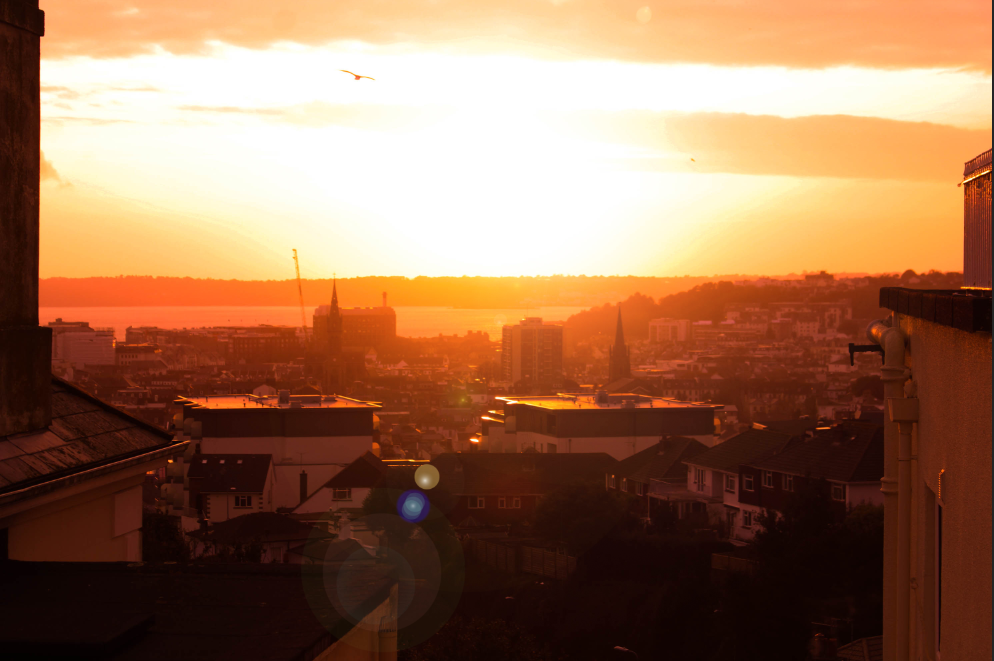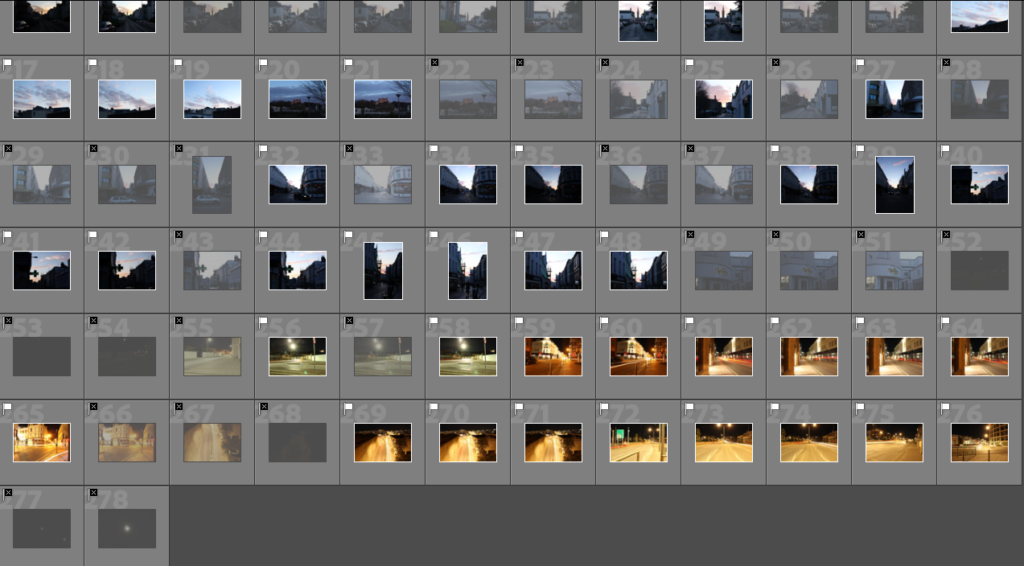I thought it would be interesting to add a lens flare to my sky images that had the sun in so I decided to bring some photos over to Photoshop to try it.
Process:

Before –

After –

Some more lens flares –



I thought it would be interesting to add a lens flare to my sky images that had the sun in so I decided to bring some photos over to Photoshop to try it.
Process:

Before –

After –

Some more lens flares –



Selections:




Editing Results:
Some examples:








































Some sky images, I changed the overall colour for some. I did this by changing the temperature and tint sliders, combined with all the basic sliders too and slight tweaks of the vibrance and saturation bars, these all were used to completely enhance and make the photos so much better:






Most of the night images edits were mostly minimal and hard to even notice, as they were mostly toned to the way I saw fit already. The ones that feature the car lights though took a bit more work than the rest of the photographs. These were made by slowing own the shutter speed on the camera, so when a car was about to pass I would press the shoot button and the shutter would stay open, capturing all the lights and movement during that window of time. When the shutter closed, after about 20 seconds, the final image would show the lights from the cars turned into streaks.




Overall very happy with these images, I think they capture the best perspectives of buildings and people, combined with the multiple colours and patterns in the evening sky. The edited ones are even better with exaggerated colours and vibrancy. Some of these photoshoots came out a little too dark or a little too bright, so I had to be careful in choosing and editing them to have just the right lighting, which I think I managed very well at doing. These all hit the boxes for me and most turned out just the way I wanted.

























































































Overall, I like most of these photos. The darkness however on most of them had a static-blurry effect on them which essentially ruined the overall photograph. They didn’t sit right with me so I had to withdraw a lot of them from the final presentation. With what I had left though I thought were great and came out very nice, especially the slow-shutter road images with the lights from the cars casting streaks of light through the road. Happy I finally managed to do some of those as I didn’t do any in year 12.

































































































Intentions –
For this exam, I want to make cinematic photographs. Photos that have the aesthetics and quality of a movie. The things I want to take pictures of will mostly involve a person or people, so portraits, and also of many views, so landscapes. Most locations would be beaches, streets, pubs, clubs, busses, cars, pathways and more. I want to have a variety of different times of day too, some taken during daylight hours and some at night. With the evenings in between, which gives me the chance to include sunset shots. I can take pictures of the moon and sun too. The main category for this project will be Observe, because the photos are of people and landscapes, like the viewer is watching these locations and these people. The main inspiration for these images is from Godfrey Reggio, with his shots of cities in his movie, Koyaanisqatsi. I like his shots of the many buildings in the big cities, they appear very deadpan and still, compared to his shots of the busy streets and roads which I also like and will try to replicate too. The movie captures a few natural structures too, like mountains and geysers. Jersey has no geysers but plenty of hills and cliff faces to capture. I also want to go to the sand dunes and capture some images there.
Technical + Visuals –
I want to use colours that blend and contrast with the subject and surroundings. I want to feature all kinds of camera angles; down shots, portraits, medium shots, extreme close-ups, wide shots, back-facing shots etc.. In terms of misc-en-scene, I want to make some photos look grainy, like it was shot on an old movie camera, I can make some photos have an orange-yellow tint to them too, or any other colour can be used – done through Lightroom, to make it look more cinematic and photogenic. For night photography, I can make streetlights in the background look either blurry or more radiant, same for car lights, which gives me another idea of slowing the shutter speed and capturing the streams of light from the cars going past. Photographs of the city at night always look nice too. Similar to Rut Blees Luxemburg’s night photographs, but with a more vibrant and cinematic twist. Day photos I can have the beams of light from the sun shine on the lens or on a person, or add a lens flare to the image. A general edit I can make is blurring the background to make anything in the foreground stand out and be highlighted, this can be easily done by changing aperture sizes. If needed, I can add cinematic bars to make the photographs more dramatic and serious.




Who Is Dziga Vertov:

Dziga Vertov, aka Denis Kaufman, was a Russian documentary film and newsreel director. He is best known for his movie, “Man with a Movie Camera”. Which to this day is still referred to as “the eighth-greatest film ever made”. The movie, published in 1929, was directed by Vertov and filmed by his brother, Mikhail Kaufman and also edited by Vertov’s wife, Yelizaveta Svilova. When it was published it was actually heavily criticised as it was deemed to have “form over content” along with other things such as it being too fast-cutting and self-reflexive.
The movie is best known for it’s range of cinematic techniques used, most for the first time ever in cinematic history. These were things like: multiple exposure, fast motion, slow motion, freeze frames, match cuts, jump cuts, split screens, Dutch angles, extreme close-ups, tracking shots, reversed footage, stop motion animations and self-reflexive visuals.
The movie itself, like Koyaanisqatsi, has no commentary. It is also in black and white and, while it shows lots of people, features only one actual character, the man with the movie camera. The meaning of the movie was to create an absolute and universal cinematographic language completely free of theatrical or literary language. The movie shows shots of places in a city, the buildings and the people, also similar to Koyaanisqatsi, while also cutting back to the audience in the theatre watching from time to time.








Personal Response:
I like the selection of effects the movie has, I can try and replicate them in my own. The things I’d like to try are the giant man, seen above, Dutch angles, unstable exposure, reverse shots, even maybe change the aspect ratio, match cuts and jump cuts. The question however is what movie to use these cinematic techniques in. The choice is still between Storm Ciaran Aftermath and Life in St. Helier. Either however could easily have these edits be applied to.
Who is Godfrey Reggio:

Godfrey Reggio is an American film director, while he has made many movies the one that stands out the most and the one he is most known for is his movie, “Koyaanisqatsi”. Which is a documentary movie made in 1982 and is an hour long observation of the man-made world that features no commentary or words, only simplistic music to go in the background. It makes heavy use of time-lapse, jump cuts, multi exposure, freeze frames, match cuts, split screens and slow-motion shots of several cities in America. The movie took inspiration from other movies such as “Man with a Movie Camera” – (1929 by Dziga Vertov) which also used the same cinematic techniques, believed to be the first time in cinematic history.
More on the meaning and the details of the movie, The title “Koyaanisqatsi” means “life out of balance” in Hopi. Additionally, The reason for the lack of dialogue was explained by Reggio, when he said “it’s not for lack of love of the language that these films have no words. It’s because, from my point of view, our language is in a state of vast humiliation. It no longer describes the world in which we live.”
This movie is not the only one of it’s kind, it is actually the first entry in the “Qatsi film trilogy” – It was followed by two more movies, Powaqqatsi (1988), which means “Life in Transformation”, and Naqoyqatsi (2002), which means “life as war”. The trilogy is supposed to depict the relationship of nature, humans and technology. In the future, the film was selected for preservation in the United States National Film Registry by the Library of Congress for being “culturally, aesthetically, or historically significant”.









Personal Response
I want to make a film project on the Storm Ciaran aftermath too, I can visit places in Jersey that are still damaged/being repaired and document each site into a non-commentary movie. With fitting music in the background. Another choice I can take is documenting St. Helier in a more similar fashion to the movie, with the same type of music in the background. Things I could have in the movie could be time-lapse footage of the busy roads like Victoria ave., time-lapse footage of the sun setting or rising, rainy days, busy streets full of people etc.. Another thing I can experiment with is setting up a camera pointing at me sitting on a bench sitting still, then having time-lapse of people walking past, almost to make it look like I’m literally observing everyday life. A certain music genre I have in mind is synthwave, to bring out the more abstract and unusualness of life – to make it more interesting.



Moodboard:

I aimed to dissect and analyse the topic title as a whole, segregating each word into their own category and Including photos that somewhat resonate with them and also match the sort of photos I wish to take.
Ideas:
Some photos I’m taking inspiration from are:






